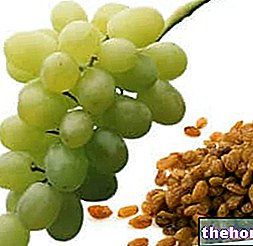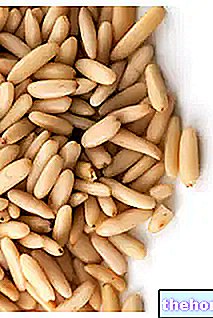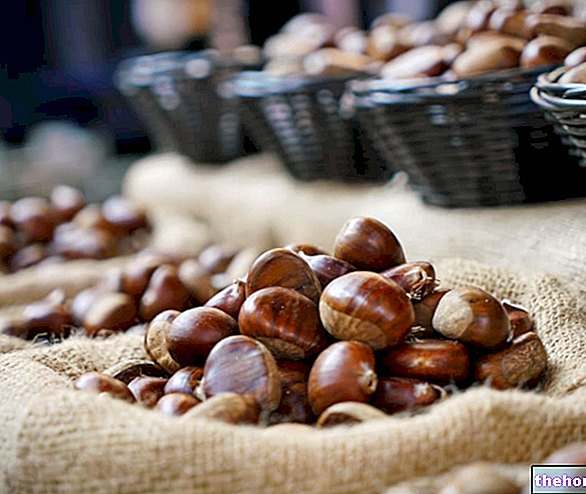Curiosity
It is said that "over time and with the straw also the medlars ripen": A sort of reinterpretation of the proverb"Patience is the virtue of the strong". Although these aphorisms were not invented with the precise intention of talking about medlars, they lend themselves well to introducing the topic we will deal with in this article: medlars, in fact. These strange fruits have the peculiarity of not being harvested when ripe: medlars love to "keep themselves waiting", therefore they can be eaten only after a more or less long period following the harvest. In this way, the fruits can be better appreciated for their sweetness and particularity.
Generality
The cultivation of medlar began to spread rapidly when it was observed that the fruit also boasted beneficial properties: astringent, regulator of intestinal and liver function, febrifuge, anti-inflammatory and diuretic. Unfortunately, due to the lack of economic interest, with the passage of time the medlar was gradually neglected in favor of far more profitable cultures.
Medlars are the fruits of two different species of plants: the European and Japanese medlar. The European medlar, or common medlar, has been known since time immemorial, and is a widespread plant in Southern Europe and Asia Minor; the Japanese medlar, however, originally from China, is currently more commercialized and cultivated. to distinguish the characteristics of one and the other, an in-depth paragraph will be dedicated to each one.
European medlar
- Description and botanical analysis of the medlar
In botany, the common medlar is Mespilus germanica, belonging to the family of Rosaceae. We are talking about a small thorny tree, no more than 5 meters high, very large in diameter: numerous twisted and rather robust branches branch off from this.

The fruits are the medlar, small apples with rough peel (diameter 2-2.5 cm), with a light brown color, covered with a light down. As described in the incipit, medlars cannot be consumed immediately after harvesting: if the fruits are picked in late autumn, they reach full ripeness only in January or February. The seeds are contained within the pulp and being harmful to the health must always be eliminated.
It is easy to understand if the medlars are ripe, therefore ready for consumption: when harvested, the fruits have a hard texture, a very sour taste and have a light brown skin. After some time, the medlars take on a gradually softer consistency and, thanks to an enzymatic transformation of the pulp, the fruit not only acquires a darker color but is modified in flavor, which is very sweet, as well as exquisite.
- Uses of medlar in phytotherapy
The dried bark can be used for the preparation of decoctions with a strongly astringent action. Furthermore, the decoction can be used for throat hygiene and, above all, as a good natural remedy against inflammation of the oral cavity.
As we have seen, immature medlars are very sour: the acidulous taste of the fruit confirms the large quantity of tannins, indirectly proportional to the degree of maturity of the same. In this case, the immature fruit exerts a strong antidiarrheal and astringent action on the intestinal level. ; vice versa, at full maturity, the astringent properties of medlar are transformed into laxatives.
Ripe fruits are also excellent diuretics.
Japanese medlar
- Description and botanical analysis of the medlar
The Japanese medlar (Eriobotrya japonica) belongs to the Rosaceae family. The Japanese medlar, originally from China, were imported to Europe at the beginning of the nineteenth century; currently, this species has taken hold in Europe, so much so that it has even been replaced, in some areas, for the species Germanic.

The most interesting part is certainly represented by the fruits, the Japanese medlars: these are white, yellow or orange, and contain one or two large brown seeds, hidden in the yellowish pulp. The seeds of the medlar contain traces of hydrogen cyanide, therefore they are not edible; in any case, with the seeds of the medlar it is possible to prepare a liqueur (Nespolino), whose flavor is comparable to Nocino.
- Japanese medlars: the problem of ripening
Japanese medlars, unlike European ones, can also be consumed when they are not completely ripe: the flavor, although acidulous, is less astringent than the other species, therefore better tolerated. However, the main reason why these medlars are sold still unripe is related to market reasons: the aim of the sellers is to make the most of the high cost (due to a lack of competition), promoting the flavor of the fruit as “normally sour”. In fact, the Japanese medlar mature it has a very sweet taste, but ripening coincides precisely with the period of the first fruits of peaches and cherries, a fact that would clearly bring down the price of medlars: in such situations, ripe medlars would no longer be “commercially interesting” fruits.
- Japanese medlar: uses
Japanese medlars are mostly exploited in the culinary field: as we have seen, tasty liqueurs can be prepared with the seeds, while sweet jams can be cooked with the pulp. Furthermore, bees are attracted to medlar flowers - due to the lack of other flowers in that period (December-January) - which they exploit for the production of honey.
Medlar in brief, Summary on the properties of Medlar "
Other Foods - Fruits Apricots Sour cherries Cashews Pineapple Watermelon Orange Avocado Banana Persimmon Persimmons Apple Chestnuts Cedar Cherries Coconut Watermelon Dates Feijoa Fig of India Figs Strawberries Berries Passion fruit (Maracujà, Granadilla) Jujube Kiwi Raspberries Coconut milk Lemons Almond milk Mango Apples Quinces Pomegranate Melon Blackberries Mustard Medlar Olives Taggiasca Olives Fermented Papaya Pears Peaches Plantains (Cooking Bananas) Pomelo Grapefruit Pink Grapefruit Plums, prunes Fruit juices and fruit juices Grape juice Plums Grapes Sultanas and Raisins OTHER ITEMS FRUIT Categories Food Alcoholics Meat Cereals and derivatives Sweeteners Sweets Offal Fruit Dried fruit Milk and derivatives Legumes Oils and fats Fish and fishery products Salami Spices Vegetables Health recipes Appetizers Bread, Pizza and Brioche First courses Second courses Vegetables and Salads Sweets and Desserts Ice cream and sorbets Syrups, liqueurs and grappas Prepare Basic tions ---- In the kitchen with leftovers Carnival recipes Christmas recipes Light diet recipes Women's, mom's and dad's day recipes Functional recipes International recipes Easter recipes Gluten-free recipes Diabetic recipes Holiday recipes Valentine's Day recipes Vegetarians Protein recipes Regional recipes Vegan recipes


.jpg)

























